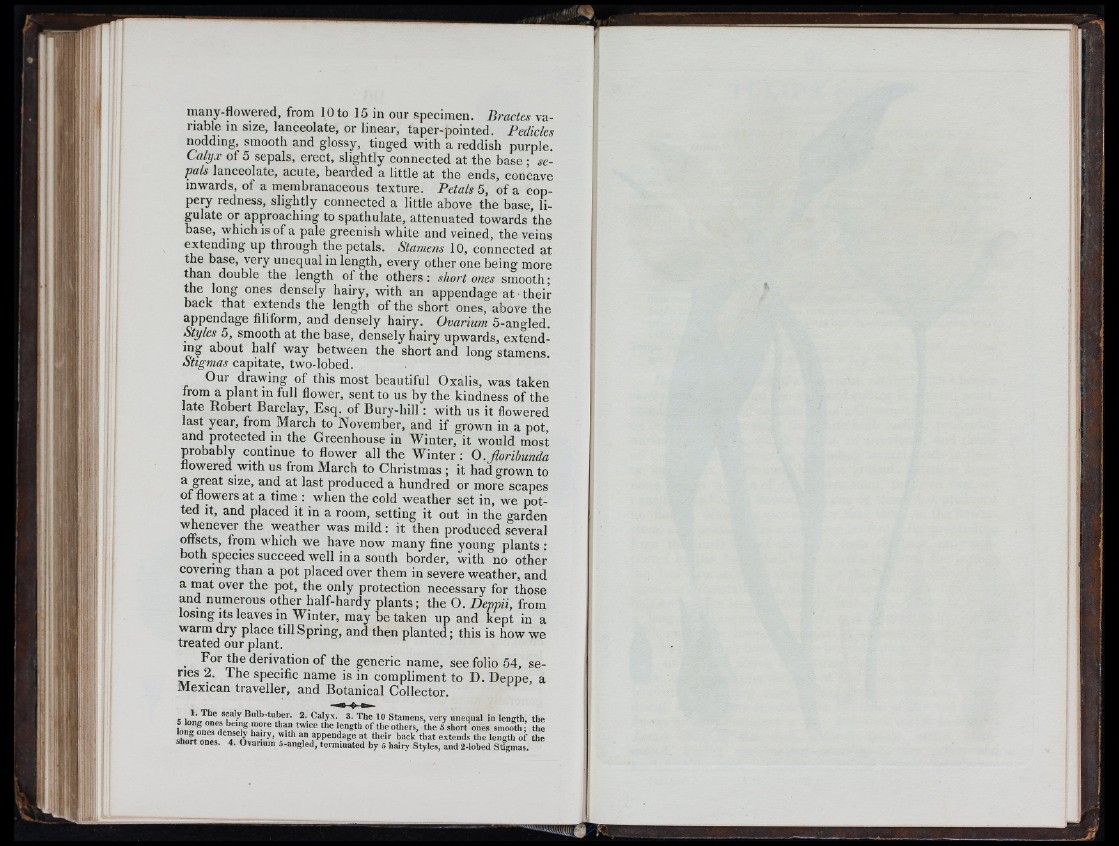
Nil'., I
many-flowered, from 10 to 15 in our specimen. Bractes variable
m size, lanceolate, or linear, taper-pointed. Pedicles
nodding, smooth and glossy, tinged with a reddish purple.
Calyx of 5 sepals, erect, slightly connected at the base ; ie-
pals lanceolate, acute, bearded a little at the ends, concave
inwards, of a membranaceous texture. Petals 5, of a coppery
redness, slightly connected a little above the base ligulate
or approaching to spathulate, attenuated towards the
base, which is of a pale greenish white and veined, the veins
extending up through the petals. Stamens 10, connected at
the base, very unequal in length, every other one being more
than double the length of the others: short ones smooth;
the long ones densely hairy, with an appendage at their
back that extends the length of the short ones, above the
appendage filiform, and densely hairy. Ovarium 5-angled.
Styles 5, smooth at the base, densely hairy upwards, extending
about half way between the short and long stamens.
Stigmas capitate, two-lobed.
Our drawing of this most beautiful Oxalis, was taken
from a plant in full flower, sent to us by the kindness of the
late Robert Barclay, Esq. of Bury-hill: with us it flowered
last year, from March to November, and if grown in a pot,
and protected in the Greenhouse in Winter, it would most
probably continue to flower all the W in te r: O. floribunda
flowered with us from March to Christmas ; it had grown to
a great size, and at last produced a hundred or more scapes
of flowers at a time : when the cold weather set in, we potted
it, and placed it in a room, setting it out in the garden
\^ en ev e r the weather was m ild : it then produced several
offsets, from which we have now many fine young plants :
both species succeed well in a south border, with no other
covering than a pot placed over them in severe weather, and
a mat over the pot, the only protection necessary for those
and numerous other half-hardy plants; the O. Deppii, from
losing Its leaves in Winter, may be taken up and kept in a
warm dry place till Spring, and then planted; this is how we
treated our plant.
For the derivation of the generic name, see folio 54, series
2. The specific name is in compliment to D. Deppe, a
Mexican traveller, and Botanical Collector.
5 2. Calyx. 3. The 10 Stamens, very unequal in lennth, the
i 7 ‘be others, the S short ones smooth; the
shn?t one " “9 ? ‘“¡‘Y’ ""“ b ty appendage at their hack that extends the length of the
short ones. 4. Ovarmm 3-angled, terminated by 5 hairy Styles, and 2-lobed Stigmas.
irli: